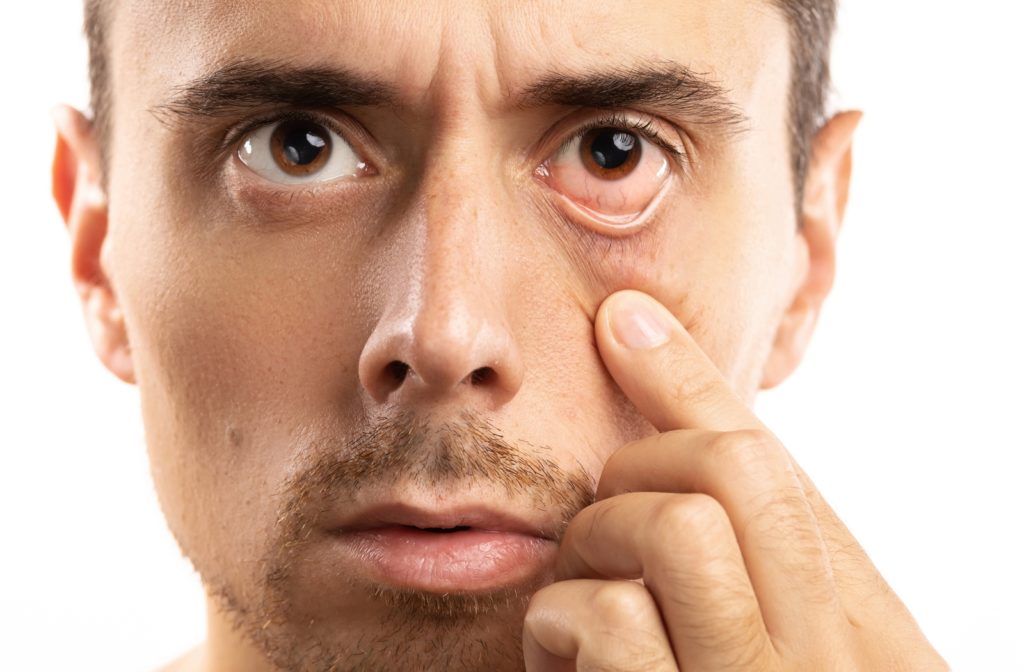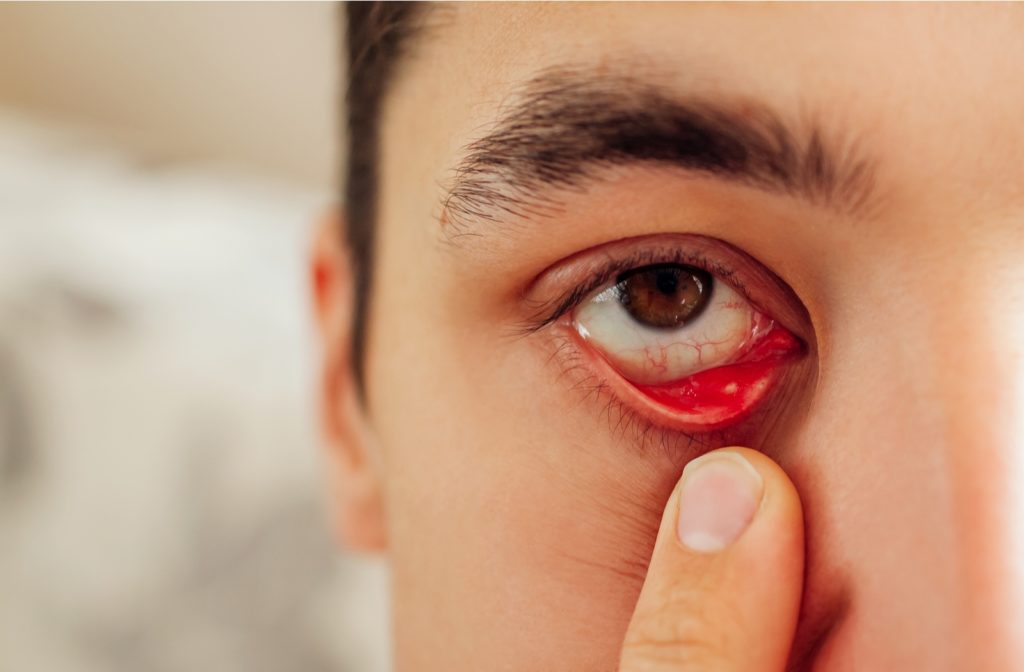Are your eyes always itchy, irritated, or uncomfortable? It could be a sign you have dry eye disease. Dry eye disease is a common condition that affects many Canadians, but that doesn’t mean you have to suffer through the symptoms.
Dry eye disease isn’t always complicated, and sometimes a simple treatment like meibomian gland expression is all it takes to get your vision and eye health back on track.
Maybe you’ve tried dry eye treatments before and haven’t found success, or maybe it’s your first time seeking help. No matter what your experience is with dry eye disease, our team at Vector Eye Center is here to help you see comfortably. Request a dry eye consultation today for an expert and detailed assessment so we can understand what’s causing your dry eye symptoms and get you started on a treatment plan that’s tailored to you and your specific dry eye needs.
Until you can see us, keep reading to learn more about meibomian gland dysfunction, how it’s linked to dry eye disease, and how meibomian gland expression can help reduce your symptoms.
What is Dry Eye Disease?
Your tears are composed of three layers: an aqueous layer, an oily layer, and a mucous layer. If there is an issue with one, two, or all three of these layers, it can result in a specific type of dry eye disease requiring a customized type of treatment approach.
While everyone can experience dry eye disease differently, some of the common symptoms you may experience include:
- A burning or scratching sensation in your eyes
- Sensitivity to light or photophobia
- Feeling like something is stuck in your eyes
- Mucus in or around your eyes
- Watery eyes
- Eye redness, blurred vision, or eye fatigue
- Difficulty wearing contact lenses
If you notice any of these symptoms, only a detailed and correct diagnosis can get you the precise treatment plan you need. At Vector Eye Center, through our patients, experience and expertise, and our clinical research and evidence-based medicine, we have learned that there is not a one-size-fits-all solution for dry eye or that one specific treatment heals all types of dry eye disease. Our team are leaders in dry eye excellence and strive to find a treatment path and care plan personalized to work for you.
Meibomian Gland Dysfunction & Dry Eye Disease
Meibomian gland dysfunction (MGD) is a common cause of dry eye disease and occurs when your meibomian glands become clogged.
Your meibomian glands are located on the edge of your eyelids and are responsible for producing the oily component in the oily layer of your tears. If there’s an issue with this oily layer, your tears can evaporate too quickly, leaving your eyes dry and unable to function properly. This can lead to a type of dry eye disease called evaporative dry eye.

Meibomian Gland Treatments
At Vector Eye Center, we only offer you treatments if we deem them right for you after a careful evaluation and diagnostic analysis. If you have dry eye symptoms, we’ll perform a comprehensive assessment to understand what’s causing your symptoms, so that we can design a treatment plan tailored to you and your individual needs.
In addition to heat, massage, lid cleaning and/or meibomian gland expression, we may recommend alternative treatments to help you get back to seeing clearly and comfortably.
Eye Drops, Medications, & Supplements
We may recommend eye drops, medications, and supplements high in omega-3 and/or significant dietary alterations (to help decrease inflammation) to treat your dry eye disease, depending on the cause of your condition.
Thermal Lid Treatments
There are many advanced treatments available to treat dry eye disease at the level of the meibomian glands. Depending on your evaluation and analysis, we may recommend any of the thermal lid treatments listed below, or a combination of these treatments. However, based on our own clinical research and current evidence, we do not feel that thermal lid treatments will be beneficial for all patients and will only recommend therapies that you qualify for, based on our assessment.
- LipiFlow is a thermo-pulsatile treatment that applies non-invasive heat adapters to the upper and lower eyelids to help melt and massage away blockages in the meibomian glands.
- MiboFlo applies consistent heat to the meibomian glands and is combined with directed meibomian gland expression to help release meibum from the meibomian glands.
- Intense Pulsed Light (IPL) Therapy helps melt blockages caused by MGD using light instead of heat, stimulates existing MGD glands and also targets any inflamed or dilated blood vessels sitting underneath the surface of the skin. It is combined with directed meibomian gland expression to release meibum from the meibomian glands.
- Radiofrequency (RF) Therapy produces high levels of consistent heat to warm and clear blockages in the meibomian glands. It is combined with directed meibomian gland expression to release meibum from the meibomian glands. RF also stimulates skin fibroblasts underlying the treated area, leading to mild tightening of overlying skin.
- Blephex is a directed exfoliative and cleansing treatment that can remove bacteria, biofilm, toxins, & debris from the eyelids to achieve better lid hygiene.
Lifestyle & Environment Changes
In some cases, dry eye disease can be caused by environmental or lifestyle factors. During your consultation, your doctor will assess your symptoms and ask questions to get to know you. If your eye doctor thinks these factors are affecting your eye health they can make recommendations to improve your dry eye symptoms.
Start Your Custom Plan Today
If you have dry eye disease, you can rest assured knowing you don’t have to live with these uncomfortable symptoms. An approach of “one treatment for all dry eye patients”, has not proven to be effective. We have also learned that thermal lid treatments do not benefit everyone with dry eye disease. Unfortunately, we provide many second opinions to unhappy patients who have undergone a “one size fits all” care pathway for dry eye. At Vector Eye Center, we provide expert care for all types of dry eye, from mild-moderate to severe forms, and remain national leaders in dry eye education, diagnosis and treatment. Get started today by requesting a dry eye consultation today!



